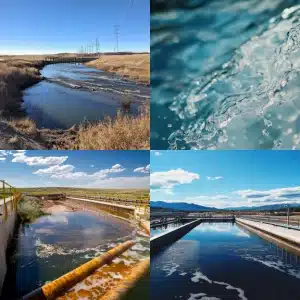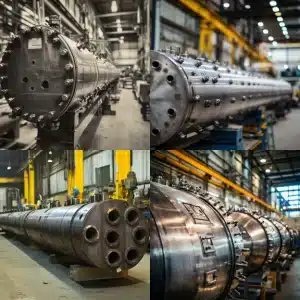Pipe Thickness in Pressure Vessels is a core design choice that drives safety, performance, and service life. The right thickness helps manage pressure loads, temperature swings, corrosion, and fatigue without overbuilding. Standards like ASME guide thickness rules, but real-world conditions and disciplined inspection matter just as much. RedRiver LLC supports clients through design, fabrication, and lifecycle planning so vessels stay compliant and dependable.
Understanding Pipe Thickness in Pressure Vessels
Pipe Thickness in Pressure Vessels shapes how a vessel handles stress, resists damage, and stays compliant throughout its working life. When a vessel operates under pressure, the pipe wall must be strong enough to contain internal forces while also allowing for thermal movement and long-term wear. Too little thickness increases the likelihood of deformation, cracking, or rupture. Too much thickness can lead to unnecessary cost, heavier systems, and fabrication challenges.
At RedRiver LLC, we treat thickness selection as a practical engineering decision, not a guess. We look at the purpose of the vessel, the operating envelope, the material choice, and the expected service environment. This approach keeps Pipe Thickness in Pressure Vessels aligned with both safety and efficiency, without unnecessary complexity. If you want to learn more about how we support vessel projects, visit https://www.redriver.team/.
Pipe thickness is also tied directly to risk management. A vessel with properly selected wall thickness is less likely to experience sudden failure, and easier to maintain over time. That advantage protects people, assets, and operational continuity.
The role of thickness in safety and performance
Pipe Thickness in Pressure Vessels is the physical barrier between controlled operation and dangerous release. Internal pressure produces hoop stress and longitudinal stress that act continuously on the wall. The thicker the wall, the more stress it can absorb before reaching a critical limit. But thickness is not just about brute strength.
Thickness influences heat transfer, vibration response, and fatigue resistance. In applications with steady pressure, thickness primarily guards against yielding. In services with pressure cycling, thickness supports fatigue durability by reducing stress intensity at welds and transitions. In high-temperature services, thickness helps maintain allowable stress even as materials soften under heat.
This is where Pressure Vessel Safety Standards and Compliance come into play. Standards provide minimum thickness values based on well-tested safety margins, but those values assume correct fabrication and predictable service. Real conditions are rarely perfectly predictable, so design teams must choose thickness with both the code rules and actual use in mind.
How incorrect thickness leads to failure
Incorrect Pipe Thickness in Pressure Vessels creates multiple failure paths. If the wall is undersized, the vessel may bulge, crack, or rupture under normal pressure. Small thickness errors can become large stress multipliers at nozzles, weld seams, and attachment points. Over time, repeated pressure or thermal cycling can turn a minor weakness into a leak or fracture.
If the wall is oversized, other problems show up. Excess thickness increases weight and can complicate weld procedures, heat treatment, and fit-up. Thick sections may cool unevenly and introduce residual stresses, which can reduce fatigue life if not managed correctly. Oversizing also raises cost without automatically improving safety beyond what standards require.
Understanding What are the safety standards for pressure vessels is essential because these standards define the safe operating baseline. When thickness does not meet or properly interpret these requirements, compliance gaps appear and risk rises.
Standards guidance and the ASME framework
Many users ask What is ASME code for pressure vessel safety because ASME is widely recognized as a leading safety framework. The ASME Boiler and Pressure Vessel Code outlines design formulas, allowable stresses, joint efficiencies, corrosion allowances, and fabrication controls that together determine thickness requirements.
In practical terms, ASME helps answer How do pressure vessels comply with safety regulations by giving a consistent path to safe design. It expects designers to consider internal and external pressure, temperature limits, material strengths, and service factors. The code also ties thickness rules to inspection, testing, and documentation so that compliance is verifiable.
At RedRiver LLC, our fabrication workflow is built around these expectations. We align Pipe Thickness in Pressure Vessels with ASME-driven calculations and then validate that alignment through disciplined production checks.
Factors that determine proper thickness
Choosing Pipe Thickness in Pressure Vessels requires balancing technical inputs instead of relying on a single factor. The most important drivers include:
- Operating pressure level and variability
Higher pressure demands thicker walls. Pressure cycling or surge conditions increase thickness needs for fatigue protection. - Operating temperature and thermal cycling
Elevated temperatures reduce material strength. Repeated heating and cooling introduces fatigue risks that thickness helps buffer. - Material strength and toughness
Stronger alloys may allow thinner walls for the same pressure rating. Ductility and fracture resistance still matter in abnormal events. - Corrosion and erosion allowances
Thickness must include extra margin for expected metal loss. This is critical in aggressive services where degradation is predictable. - Manufacturing and joint efficiency factors
Weld type, inspection level, and joint efficiency assumptions influence the final thickness required under code rules. - External loads and support conditions
Wind, vibration, nozzle loads, and support geometry affect stress patterns and can require added thickness locally.
These inputs help designers interpret How do pressure vessels comply with safety regulations in a practical way. Compliance is not just a calculation, it is a complete design and fabrication mindset.
Inspection and maintenance as part of thickness strategy
Even with correct design, Pipe Thickness in Pressure Vessels must be protected through lifecycle care. This is why Pressure Vessel Inspection and Maintenance is inseparable from thickness selection. All vessels lose material gradually through corrosion, erosion, or wear. A smart thickness strategy anticipates that loss and pairs it with inspection intervals that detect problems early.
Clients often ask How often do pressure vessels need to be inspected because inspection timing depends on service severity, material behavior, and risk tolerance. Regardless of interval, inspections must be systematic, documented, and performed with the right tools.
A practical thickness program includes clear guidance on How to inspect a pressure vessel. Typical methods include visual checks for surface defects, thickness measurement to confirm remaining wall, and focused examination at high-stress zones around welds and nozzles. A well-defined process also specifies What to include in a pressure vessel inspection checklist, such as:
- Surface condition review for pitting, cracking, or deformation
- Thickness mapping at representative and high-risk points
- Weld seam inspection for discontinuities
- Nozzle and attachment inspections for stress concentration damage
- Verification of operating history and any abnormal events
- Documentation of findings and trend comparison to past records
When this kind of checklist is followed, Pipe Thickness in Pressure Vessels can be managed proactively instead of reactively. RedRiver LLC supports clients not only during fabrication but also by helping them plan inspection and maintenance pathways that match real service needs.
Why partnering early helps
Pipe Thickness in Pressure Vessels is easiest to optimize when fabrication experts are involved early. Early collaboration helps avoid redesigns, delays, or cost spikes caused by thickness changes late in the project. It also allows thickness decisions to reflect realistic manufacturability and inspection access.
RedRiver LLC brings engineering awareness and shop-floor practicality together. We aim for compliant thickness that is also buildable, inspectable, and sustainable for long-term use. That is the difference between meeting a code minimum and delivering a vessel that performs smoothly year after year.
Pipe Thickness in Pressure Vessels as a long-term safety choice
Pipe Thickness in Pressure Vessels is not a single line on a drawing, it is a long-term safety choice that affects reliability, compliance, and operating cost. When thickness matches pressure loads, temperature demands, material behavior, and corrosion expectations, vessels perform safely across their lifespan. When it is wrong, even slightly, risk compounds and maintenance becomes reactive. RedRiver LLC helps clients make thickness decisions that hold up in real service, backed by standards, fabrication discipline, and lifecycle thinking.
Work with RedRiver LLC on compliant vessel design
If you are planning a new vessel or reviewing an existing system, RedRiver LLC can help you evaluate Pipe Thickness in Pressure Vessels with confidence. Our team supports design alignment, code-compliant fabrication, and practical inspection planning so your equipment stays safe and dependable. Reach out through https://www.redriver.team/ to talk through your application and next steps.
FAQs
What are the safety standards for pressure vessels?
Pressure vessel safety standards are defined by recognized codes that specify design limits, thickness rules, fabrication methods, testing requirements, and inspection expectations. These standards exist to ensure vessels can safely hold pressure during normal operation and foreseeable upsets.
What is ASME code for pressure vessel safety?
ASME pressure vessel codes provide formulas and construction rules that determine minimum wall thickness, allowable stresses, weld requirements, and inspection levels. They establish a consistent compliance pathway used broadly across industry.
How do pressure vessels comply with safety regulations?
Pressure vessels comply by being designed to code, fabricated by qualified procedures, inspected to required levels, and documented with traceable records. Compliance also includes ongoing inspection and maintenance that verify the vessel remains within safe limits.
How often do pressure vessels need to be inspected?
Inspection frequency depends on service conditions, risk classification, and regulatory requirements. Vessels in harsher environments generally require more frequent inspections than those in mild, stable service.
How to inspect a pressure vessel effectively?
Effective inspection combines visual examination, thickness measurement, weld checks, and targeted non-destructive testing in high-stress or corrosion-prone zones. Results should be compared to prior records to identify trends.
What to include in a pressure vessel inspection checklist?
A checklist should cover surface condition, thickness readings, weld integrity, nozzle condition, support and attachment areas, operating history review, and full documentation of results.
Why is corrosion allowance important to thickness selection?
Corrosion allowance adds extra wall thickness so predictable metal loss does not reduce the vessel below safe limits before the next inspection or planned replacement.
Key Takeaways
- Pipe Thickness in Pressure Vessels drives safety, fatigue resistance, and service life.
- Standards and ASME rules set minimum thickness, but real conditions shape final choices.
- Inspection and maintenance protect thickness margins over time.
- A clear inspection checklist prevents small defects from becoming major failures.




